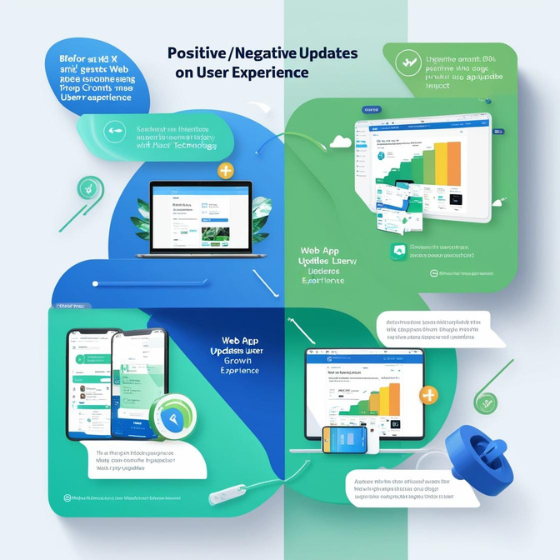How to Choose the Right Tools for Web App Development
In today’s fast-paced digital landscape, creating a robust, efficient, and user-friendly web application is crucial for businesses looking to succeed online. The right tools can make the difference between a smooth development process and one fraught with challenges. This article will guide you through how to choose the right tools for web app development, ensuring your project is on the path to success.
Understanding Your Project Requirements
Before diving into the sea of web development tools, it’s essential to have a clear understanding of your project’s requirements. This involves:
- Defining the Project Scope: Determine the size and complexity of the web application. Are you building a simple website or a complex web application with multiple functionalities?
- Identifying the Target Audience: Understand who will be using the web app. This can influence the design, functionality, and even the choice of development tools.
- Setting Clear Goals: What do you want to achieve with this web app? Are you looking for high performance, scalability, or perhaps a specific user experience?
Front-End Development Tools
The front-end of your web application is what users interact with directly. Choosing the right tools for front-end development is crucial for ensuring a seamless user experience.
Frameworks and Libraries
- React.js: Developed by Facebook, React.js is a popular JavaScript library for building user interfaces. It allows developers to create reusable UI components, making development faster and more efficient.
- Angular: Managed by Google, Angular is a powerful framework for building dynamic web applications. It offers a robust set of tools and features, including two-way data binding and dependency injection.
- Vue.js: Known for its simplicity and flexibility, Vue.js is a progressive JavaScript framework that is easy to integrate with other projects and libraries.
Design and Prototyping Tools
- Figma: A web-based design tool that allows for real-time collaboration. It is excellent for creating responsive designs and prototypes.
- Adobe XD: Another powerful design tool that supports wireframing, prototyping, and collaboration.
Back-End Development Tools
The back-end of your web application is responsible for server-side logic, database interactions, and overall application functionality. Choosing the right back-end tools is critical for building a secure and efficient web application.
Programming Languages and Frameworks
- Node.js: A JavaScript runtime built on Chrome’s V8 engine, Node.js allows for building scalable network applications. It’s particularly useful for real-time applications.
- Django: A high-level Python web framework that encourages rapid development and clean, pragmatic design. It’s known for its security features and scalability.
- Ruby on Rails: A server-side web application framework written in Ruby. It is designed to make programming web applications easier by making assumptions about what every developer needs to get started.
Databases
- MySQL: An open-source relational database management system. It’s widely used and known for its reliability and performance.
- MongoDB: A NoSQL database that stores data in flexible, JSON-like documents. It is ideal for handling large volumes of unstructured data.
- PostgreSQL: An advanced, open-source relational database with a strong reputation for reliability, feature robustness, and performance.
DevOps Tools
DevOps practices aim to shorten the systems development life cycle and provide continuous delivery with high software quality. The right DevOps tools can significantly streamline your development and deployment processes.
- Docker: A platform for developing, shipping, and running applications in containers. It allows for consistent environments across multiple stages of development.
- Kubernetes: An open-source system for automating the deployment, scaling, and management of containerized applications.
- Jenkins: An open-source automation server that supports building, deploying, and automating any project.
Version Control Systems
Version control systems are essential for tracking changes in your codebase and collaborating with other developers.
- Git: A distributed version control system that allows multiple developers to work on the same project simultaneously. It is the backbone of many version control workflows.
- GitHub: A cloud-based platform for version control and collaboration. It allows you to host and review code, manage projects, and build software alongside millions of other developers.
Testing Tools
Testing is a critical part of the web app development process. The right testing tools can help you identify and fix bugs before they reach production.
- Selenium: An open-source tool for automating web browsers. It is widely used for functional testing.
- Jest: A JavaScript testing framework developed by Facebook. It is particularly useful for testing React applications.
- Postman: A collaboration platform for API development. It allows you to design, mock, debug, test, document, monitor, and publish APIs.
Choosing the Right Tools for Your Team
When considering how to choose the right tools for web app development, it’s crucial to factor in your team’s expertise and experience. Here are some tips:
- Assess Skill Levels: Choose tools that match your team’s current skills or that they can quickly learn.
- Consider Collaboration Needs: Opt for tools that facilitate collaboration, especially if your team is distributed.
- Evaluate Support and Community: Tools with robust documentation and active communities can provide valuable support and resources.
Cost and Licensing
Budget constraints can influence your choice of tools. While some tools are open-source and free, others require licensing fees. Consider the total cost of ownership, including initial purchase, maintenance, and any potential training costs.
Future-Proofing Your Application
Technology evolves rapidly, and choosing tools that can grow with your project is essential. Opt for tools that are actively maintained and have a clear roadmap for future updates.
Conclusion
Selecting the right tools for web app development is a critical step that can significantly impact the success of your project. By understanding your project requirements, evaluating different tools based on their features and suitability for your team, and considering factors like cost and future scalability, you can make informed decisions that will set your web application up for success.
Remember, the key to successful web app development lies in choosing tools that not only meet your current needs but also provide the flexibility and scalability to adapt to future challenges. Keep your project goals in mind, and don’t hesitate to invest in the right tools that will help you achieve them.
By following these guidelines on how to choose the right tools for web app development, you’ll be well-equipped to navigate the complexities of the development process and deliver a web application that meets and exceeds your users’ expectation.







